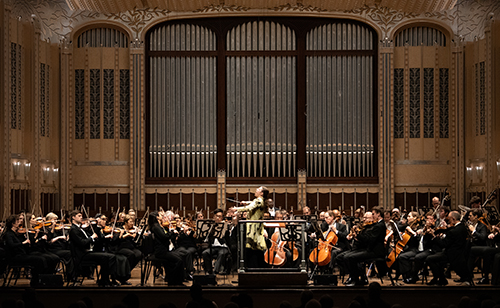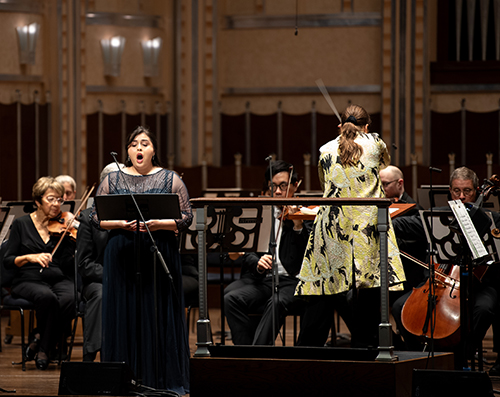Daniel Hathaway | Cleveland Classical
Originally posted on Cleveland.com

The two women left indelible impressions on the audience as well as on music by Einojuhani Rautavaara, Jean Sibelius, and Julia Perry. Stasevska’s much anticipated visit lived up to expectations. She exuded musical passion for whatever score was in front of her and the orchestra responded in kind.
The program also featured a large host of invisible guest artists — the birds of the north — who had pre-recorded their parts for Rautavaara’s Cantus Arcticus, subtitled “Concerto for Birds and Orchestra.. Set in three movements, the piece captured the essence of the northern wilderness in a beautiful coming together of natural and created sounds.

A recording of whooper swans captured the beginning of the birds’ preparations for migration. A chorale in the horns was passed on to violas and cellos as the third movement (“Swans migrating”) grew to a climax, then receded into silence as the swans flew off into the distance.
Rautavaara’s panoramic music beautifully underscored the complex sounds of nature, and Stasevska and the Orchestra put it across sonorously.
Julia Perry, who grew up in Akron and studied at Tanglewood with Luigi Dallapiccola and abroad with Nadia Boulanger, wrote her Stabat Mater for mezzo-soprano and string orchestra in 1951, setting an anonymous 13th-century poem that finds Mary meditating and weeping at the foot of the cross on which her son is being crucified.

Maldonada effortlessly traversed Perry’s lyrical lines, while saving her biggest pipes for all the right moments. Stasevska paced the drama adroitly, and concertmaster Amy Lee contributed lush solos.
Thursday’s program ended with a remarkable performance of Sibelius’ Second Symphony in which Stasevska unleashed astonishing levels of physical energy and pushed the Orchestra to extremes of tempo and dynamics. This was Sibelius — musical poet of the icy North — on a grand scale.
She kept the tempo moving ever forward in the suspenseful first movement, and took Sibelius’ Vivacissimo quite literally in the third (the Orchestra rose to that challenge with headroom to spare). Her transition into the finale was thrilling.

After being granted a moment to breathe, the audience erupted in a volcanic ovation. It’s apparently not a habit with Stasevska to give standups to individual players or sections, but surely some were deserved on Thursday, including the flutes who so memorably introduced the birdsong concerto, and principal trumpet Michael Sachs, who crowned the full orchestra sound in so many Sibelius climaxes.
Photos by Aireonna McCall
Published on ClevelandClassical.com. March 25, 2024
Click here for a printable copy of this article



